
Eugene Schoen (1880-1957)
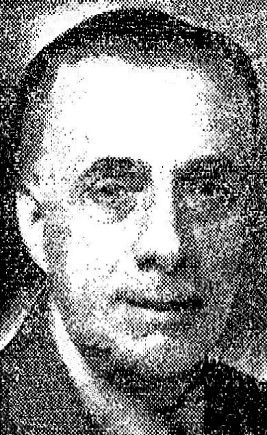
Eugene Schoen
Eugene Schoen (1880-1957) was born in New York City. He studied architecture at Columbia University, graduating in 1901 with his degree. During the summers, he worked for McKim, Mead & White architects. Upon graduation, William R. Ware, founder of Columbia's Dept. of Architecture, arranged a travel stipend for him and an introduction to Otto Wagner. Wagner introduced him to Josef Hoffmann, one of the founders of the Wiener Werkstätte (Vienna workshops). Hoffmann is sometimes called the 'Father of Modernism', a style which was to have a profound impact on Schoen's future designs.
Around 1904, Schoen began work as an architect, briefly working in the architectural office of Robert W. Gibson in New York before became partner in Hedman & Schoen with Swedish architect Axel S. Hedman. He remained with Hedman from 1905 until ~1918. Among their projects were the Ohab Zedek Synagogue (Completed 1907), the remodeling of former Lenox Lyceum as the New German Theatre (1908, as associate architects) the Shaare Zedek Synagogue (completed 1910), the East Orange Simms Magneto Company factory (1914), the Brooklyn Bnai Sholaum Synagogue (1915) and the Queens Nathan Mfg. Co. brass appliance factory complex (1917)
An application to protect the Shaare Zedek Synagogue explains that Schoen was the architect for the building, which was "an early design by Schoen, an influential modernist. Schoen's design combines classically-inspired elements with a more modern sensibility, reflected in the use of geometrically-patterned brick and abstract painted ornament." (Application for Shaari Zedek Synagogue, National Register of Historic Places Form 10-900a, Dated 10/20/2009). The application was not granted, however. Schoen also practiced independently during and after this time.
During World War I, architectural jobs were scarce so Schoen became the
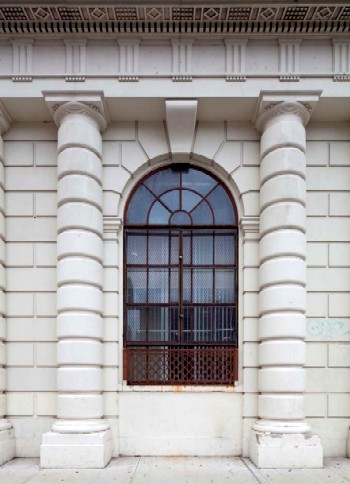
Window Detail, Williamsburg Branch, Bank of New York, 1923,
Landmarks Preservation Commission Application (PDF)
general manager at his uncle's International Oxygen Company in Newark. Following the war, he returned to architecture, receiving the patronage of the Public National Bank of New York between 1921 and 1930. He designed several branch banks, including the neo-Classical Graham Avenue branch, the Brooklyn branch (1923), several branches in New York completed between 1923 and 1927, and the Art Moderne Claremont Parkway branch in the Bronx (1931). His son Lee joined his architectural firm in the late 1920s as did his son Harold by 1937 which by then was known as Eugene Schoen & Sons. They were involved in the design of a number of architectural projects in and around New York through the 1950s.
Schoen visited the 1925 Paris Exposition des Arts Décoratifs et Industriels Modernes Schoen which inspired him to open an interior decorating gallery in New York. It is said that he shifted his focus from architecture to interior design following the Exhibition. Schoen designed Modern furniture, lights, rugs, and occasional items for clients. In 1928, his gallery displayed completed room interiors. "Schoen's designs merged the pure geometries and material sumptuousness he had taken from the Viennese with the elegance and softened contours of the French. His innovative mixture as animated and urbane; its evident refinement immediately won over a number of clients." (Christopher Long, Paul T. Frankl and modern American design, 2007, pp. 61-2)
Schoen was not afraid to use newly available materials such as Fabrikoid, Flexwood, and Monel in his designs. This quality stylish furniture attracted wealthy clients, a great deal of which was produced by Schmieg, Hungate, and Kotzian. He maintained enough of a clientele to see himself through the Great Depression, maintaining exclusivity by selling only through them or clients of other decorators. As a result, much the furniture he designed was often one of a kind.
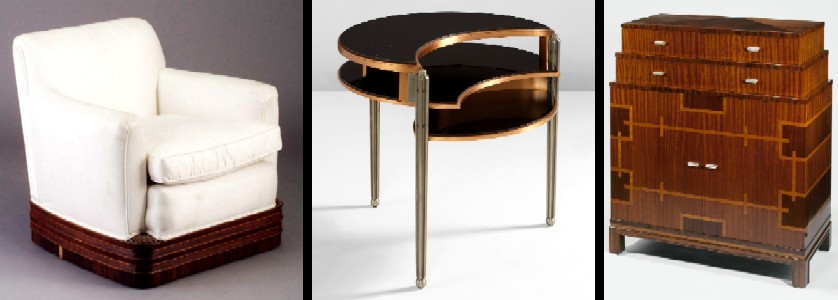 Eugene Schoen Furniture, from left - Armchair, White Silk Upholstery, Laminated Rosewood Veneer Base, Invaluable; Cocktail Table, Monel, Bronze, Bakelite and Steel, c. 1929, Phillips; Cabinet, Rosewood, Mahogany and Maple with Metal Pulls, mMade by Schmieg, Hungate and Kotzian, 1928, Art Institute of Chicago
Eugene Schoen Furniture, from left - Armchair, White Silk Upholstery, Laminated Rosewood Veneer Base, Invaluable; Cocktail Table, Monel, Bronze, Bakelite and Steel, c. 1929, Phillips; Cabinet, Rosewood, Mahogany and Maple with Metal Pulls, mMade by Schmieg, Hungate and Kotzian, 1928, Art Institute of Chicago
Schoen was also hired by Donald Deskey in 1930 to do the interior design for the Radio-Keith-Orpheum (RKO) Roxy Theatre at Rockefeller Center. Deskey had won the competition to design the Roxy and the the much larger International Music Hall, but he was overwhelmed by the scope of both projects and decided to bring Schoen in to design the smaller theater. The New York Times praised its 'grace and refinement.' The Driving for Deco website contains a detailed look at the RKO Roxy which includes a number of period black & white photos of the interior.
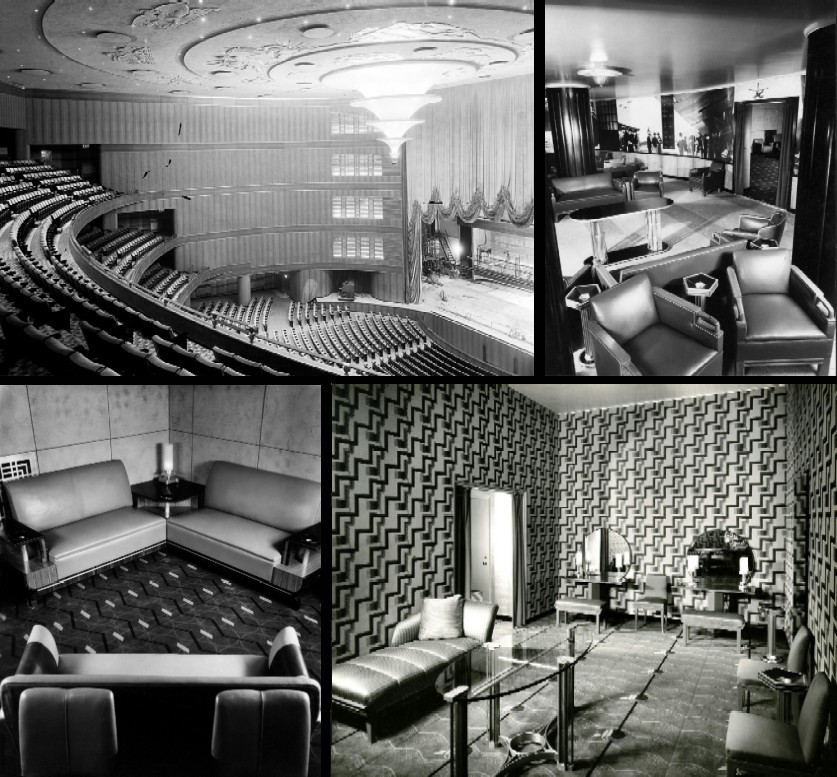 RKO Roxy Theater Interiors, from left - Eugene Schoen, RKO Roxy Theater, 1932; Men's Smoking Room, Basement of the RKO Roxy Theater, 1930s; Grand Lounge at RKO Roxy, 1930s; Ladies' Powder Room, RKO Roxy Theatre, Photo - Fay S. Lincoln, c. 1932
RKO Roxy Theater Interiors, from left - Eugene Schoen, RKO Roxy Theater, 1932; Men's Smoking Room, Basement of the RKO Roxy Theater, 1930s; Grand Lounge at RKO Roxy, 1930s; Ladies' Powder Room, RKO Roxy Theatre, Photo - Fay S. Lincoln, c. 1932
Other Schoen interior design commissions included the L.C. Smith & Corona Typewriter Co. showroom (1926), Stewart & Co. (1929), the S.S. Leviathan nightclub (1929), the Dunhill tobacco shop (1933) Café Loyale and Savoy Room (1936), Savoy Plaza Hotel and the Lincoln Bar (1937), Hotel Lincoln; Cafritz House in Washington DC (c. 1939); and the Sherry-Netherland and Commodore Hotels.
He participated in a number of influential design exhibitions. Among these were a living room for Macy's 1928 'International Exposition of Art in Industry'. He created the sales alcove and children's bedroom and nursery as well as serving on the Co-operating Committee of Architects for the Metropolitan Museum of Art's 1929 Exhibit 'The Architect and the Industrial Arts: An Exhibition of Contemporary Design'. He designed a Dining Room for the MET's 1934 'Contemporary American Industrial Art'. He was named as technical advisor for the New York State exhibit at the Century of Progress Exposition in Chicago in 1933-34.
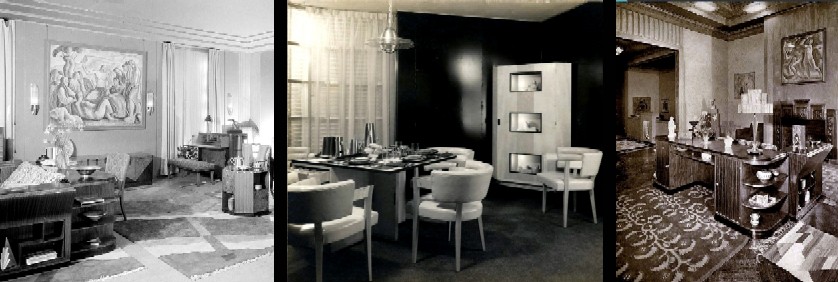 Eugene Schoen Room Designs, from left - iving Room, Macy's Art in Industry Exhibit, Photo: Sigurd Fischer, 1928, Library of Congress; Dining Room, Contemporary American Industrial Art Exhibit, The MET, 1934, Art Institute of Chicago; iving Room, New York, 1928, Tumblr
Eugene Schoen Room Designs, from left - iving Room, Macy's Art in Industry Exhibit, Photo: Sigurd Fischer, 1928, Library of Congress; Dining Room, Contemporary American Industrial Art Exhibit, The MET, 1934, Art Institute of Chicago; iving Room, New York, 1928, Tumblr
Like many other Modernist industrial artists, Schoen also taught. Beginning in 1901, he lectured on art and architecture at public schools in Brooklyn and Manhattan continuing to do so into the 1910s. He became a professor of interior architecture at New York University in 1931. In addition to interior design work in the 1930s, Schoen continued to do architectural design throughout the 1930s and 40s. He received a medal of honor "in native industrial art" from the Architectural League of New York, for a metal and glass building entrance. He was also a member of Paul Frankl's American Union of Decorative Artists and Craftsmen (AUDAC).
Sources Not Cited Above:
"Eugene Schoen", Modernism website, gathered 4/2/25
Jay Shockley, "Williamsburgh Branch, Public National Bank of New York", Landmarks Preservation Commission January 17, 2012, Designation List 451 LP-2471
Michael H. Perlman, "Legendary Locals of Forest Hills and Rego Park", 2015, p. 116
"Eugene Schoen", Geni website, gathered 4/7/25
"Étagère", The MET website, gathered 4/3/25
Original Facebook Group Posting
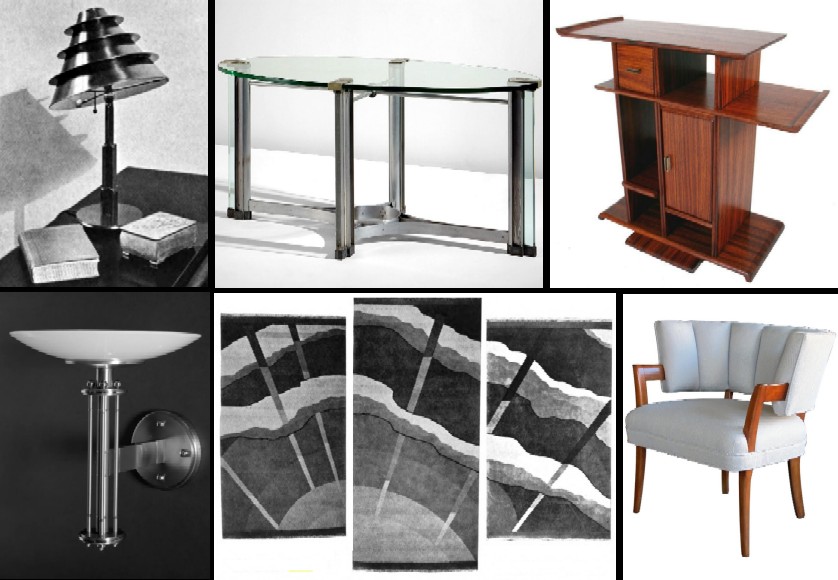 Eugene Schoen Furniture and Lighting, from left - Table Lamp with Tilting Shade, Gunmetal Color, Metal, 1929, 'Table, Monel, Nickel, Duraluminum, Glass, RKO Roxy Theater, Ladies' Lounge, c. 1932, Phillip; Trends in Decoration', Good Furniture Magazine, Sept. 1929; Side Table, Rosewood, Hungate, Schmieg, and Kotzian, 1930s, 1st Dibs; Wall Sconce Light, Metal and Glass, 1924-32, Brooklyn Museum; Rugs, 'Modernistic Rugs Made in America', Good Furniture Magazine, July, 1928, p. 39.; Shellback Chairs, Wood and Upholstery, Restored, 1930s, 1st Dibs
Eugene Schoen Furniture and Lighting, from left - Table Lamp with Tilting Shade, Gunmetal Color, Metal, 1929, 'Table, Monel, Nickel, Duraluminum, Glass, RKO Roxy Theater, Ladies' Lounge, c. 1932, Phillip; Trends in Decoration', Good Furniture Magazine, Sept. 1929; Side Table, Rosewood, Hungate, Schmieg, and Kotzian, 1930s, 1st Dibs; Wall Sconce Light, Metal and Glass, 1924-32, Brooklyn Museum; Rugs, 'Modernistic Rugs Made in America', Good Furniture Magazine, July, 1928, p. 39.; Shellback Chairs, Wood and Upholstery, Restored, 1930s, 1st Dibs